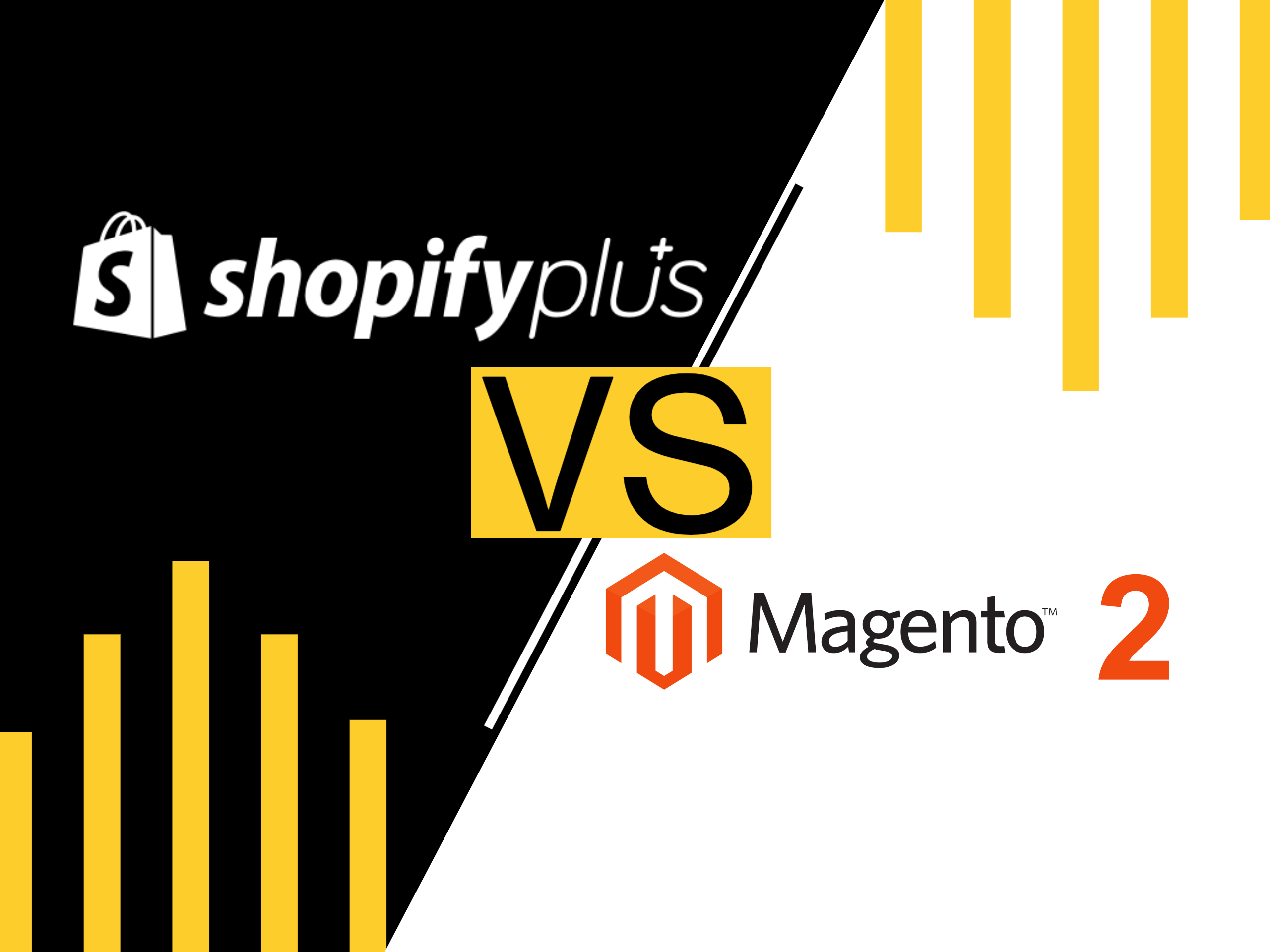Comparing E-Commerce Platforms: Magento 2 and Shopify Plus
- E-Commerce
- Shopify
- 4 Mins

Choosing Between E-Commerce Platforms: Magento 2 and Shopify Plus
Choosing an E-Commerce platform can be a tough decision for many stores. There are pros and cons to each, and how a given platform can benefit you is often dependent on individual factors like size, revenue, and storefront needs. Today, we’ll take a look at some of the key differences between two of the biggest options in E-Commerce, Magento 2 and Shopify Plus.
Shopify
Shopify is an E-Commerce platform that was launched in 2008 out of Canada, known for their built-in features, accompanying apps, and scalable online storefronts.
Shopify’s Rising Popularity
Around 1 out of 5 of all E-Commerce stores are hosted on Shopify, and it’s easy to see why. From a consumer perspective, Shopify is seen as extremely user-friendly. They have a lower customer size and smaller market share, but as of late, businesses on Shopify Plus have enjoyed incredible market share growth, especially in the B2C space. Shopify possesses a huge global ecosystem, namely with agency and tech partners, as well.
Shopify’s Proprietary Code
Shopify has a proprietary code, which means it’s unique to the platform and can’t be modified by just anyone. This is great for more simple stores that don’t need backend modification – which adds to Shopify’s user-friendliness for merchants without tech-savviness. However, more complex stores seeking advanced functions may find this feature limiting.
Shopify’s Upfront and Operational Costs
For businesses in the middle-size range, Shopify Plus’ cost is often seen as more reasonable. Shopify Plus runs a flat fee of $2,000 (~£1600) per month until you begin making more than $800,000 (£650,000) per month, at which point the fee is revenue-based at 0.25% of your monthly revenue.
Shopify’s SaaS Platform Service
Shopify Plus is aSaaS platform, short for “software-as-a-service.” It’s a single-option platform through Shopify, making it one size fits all. This may not be suffice for larger businesses, or may be too advanced for smaller shops, which overextends their budget for unnecessary capabilities. With that said though, it does offer an entirely hosted, cloud-based solution, which does simplify things.
Magento
Magento is an open-source E-Commerce platform also launched in 2008, originally developed by Varien, Inc. out of Culver City, California. They’re known for their flexible tools and greater content and functionality abilities.
Magento’s Long-Standing Popularity
Magento has been a reasonably popular option just as long as Shopify, and held the title as the biggest E-Commerce platform for a long period of time. It currently accounts for between 10-15% of all online stores. It’s often seen as a more flexible platform that works for a wider variety of shops, also considered “one-size-fits-all” from a merchant perspective. Currently, they have a larger average retailer size, and a bigger presence in the B2B space.
Magento’s Modifiable Open-Source Coding
Magento uses open-source coding in the form of the computing language PHP. Being open-source means that it’s freely available and can be modified by anyone, giving merchants more complex technical capabilities. PHP is great for dynamic web pages, and Magento’s modifiable coding is perfect for stores that need advanced functions that require changes to source code.
Magento’s Scalable Price
Magento 2 Community has software free for everyone, which is great news for smaller companies with lower profit margins. For businesses looking to upgrade their features, Magento 2 Enterprise Solutions Editions will run you a tad more, with commerce licensing that increases as merchant turnover does. Their licensing fees begin around $22,000 (~£18,000) a year for gross sales revenue under $1 million (~£815,000). At most, you’ll see Magento 2 costing $125,000 (~£102,000) a year – the price tag associated with shops that bring in $25-50 million (~£20.4-40.7 million) in revenue. Their support operating services can also add up quickly, but for smaller stores with smaller needs, Magento 2 is ever-so-slightly less expensive than its Shopify Plus counterpart.
Self-Hosted PaaS Platform of Magento
Unlike Shopify’s SaaS, Magento is aPaaS – “platform-as-a-service.” It is self-hosted, meaning that users need to pay for a third-party hosting service. While these can require more upgrades and security patches, PaaS offers more flexibility for shop owners. Users can choose a hosting solution that directly fits their individual wants, needs, and price range, and third-party hosting can be very cheap for small enough stores. Some of the lowest hosting services even run less than £5 per month.
Why Radiant Works With Shopify
At Radiant, we’ve always had a knack for Shopify and Shopify Plus, and we appreciate how easily user-friendliness and customisability coexist. If you’re leaning towards Shopify, get in touch with us today to see how our team of Shopify experts can elevate your E-Commerce experience through fully-unique storefronts and priority support services.





